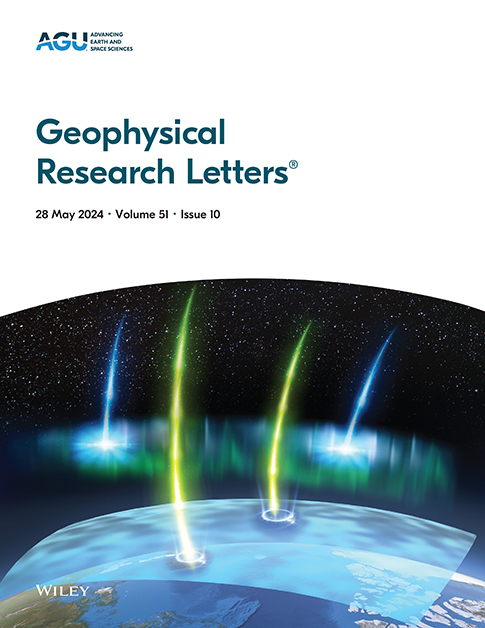CMIP6模式下赤道太平洋云反馈的不确定性
IF 4.6
1区 地球科学
Q1 GEOSCIENCES, MULTIDISCIPLINARY
引用次数: 0
摘要
云反馈是估计平衡气候敏感性的最大不确定性。在本研究中,我们将重点放在赤道太平洋,在那里CMIP6模式的云反馈传播非常大。该地区的云辐射效应与全球气候有关。我们的研究结果表明,模型预测在响应类似厄尔尼诺现象的海面变暖时,海平面将持续向上升方向转变。由于上升和下沉地区的云特征不同,模式在辐射影响方面存在分歧。利用观测到的环流状态和云辐射效应之间的关系,我们发现区域平均云反馈估计值从0.77减少到0.22,尽管这并没有实质性地减少模式在总反馈中的传播。减少这种扩散的途径包括:提高对区域海洋变暖模式的信心,以及利用观测和模式来了解云类型和环流相互作用。本文章由计算机程序翻译,如有差异,请以英文原文为准。
Cloud Feedback Uncertainty in the Equatorial Pacific Across CMIP6 Models
Cloud feedback is the largest uncertainty in estimating Equilibrium Climate Sensitivity. In this study we focus on the equatorial Pacific, where CMIP6 model cloud feedback spread is notably large. Cloud radiative effects in this region are relevant for the global climate. Our findings show that models predict a consistent shift towards the ascent regime in response to El Nino‐like sea surface warming. Models diverge in terms of the radiative impact due to differences in cloud characteristics in ascent and subsidence regimes. Using the observed relationship between circulation regime and cloud radiative effect, we find a reduction in the regional mean cloud feedback estimate from 0.77 to 0.22 , though this does not substantially lessen the model spread in total feedback. Pathways to reduce this spread include: improving confidence in the regional ocean warming pattern, and using observations and models to understand cloud type and circulation interactions.
求助全文
通过发布文献求助,成功后即可免费获取论文全文。
去求助
来源期刊

Geophysical Research Letters
地学-地球科学综合
CiteScore
9.00
自引率
9.60%
发文量
1588
审稿时长
2.2 months
期刊介绍:
Geophysical Research Letters (GRL) publishes high-impact, innovative, and timely research on major scientific advances in all the major geoscience disciplines. Papers are communications-length articles and should have broad and immediate implications in their discipline or across the geosciences. GRLmaintains the fastest turn-around of all high-impact publications in the geosciences and works closely with authors to ensure broad visibility of top papers.
 求助内容:
求助内容: 应助结果提醒方式:
应助结果提醒方式:


